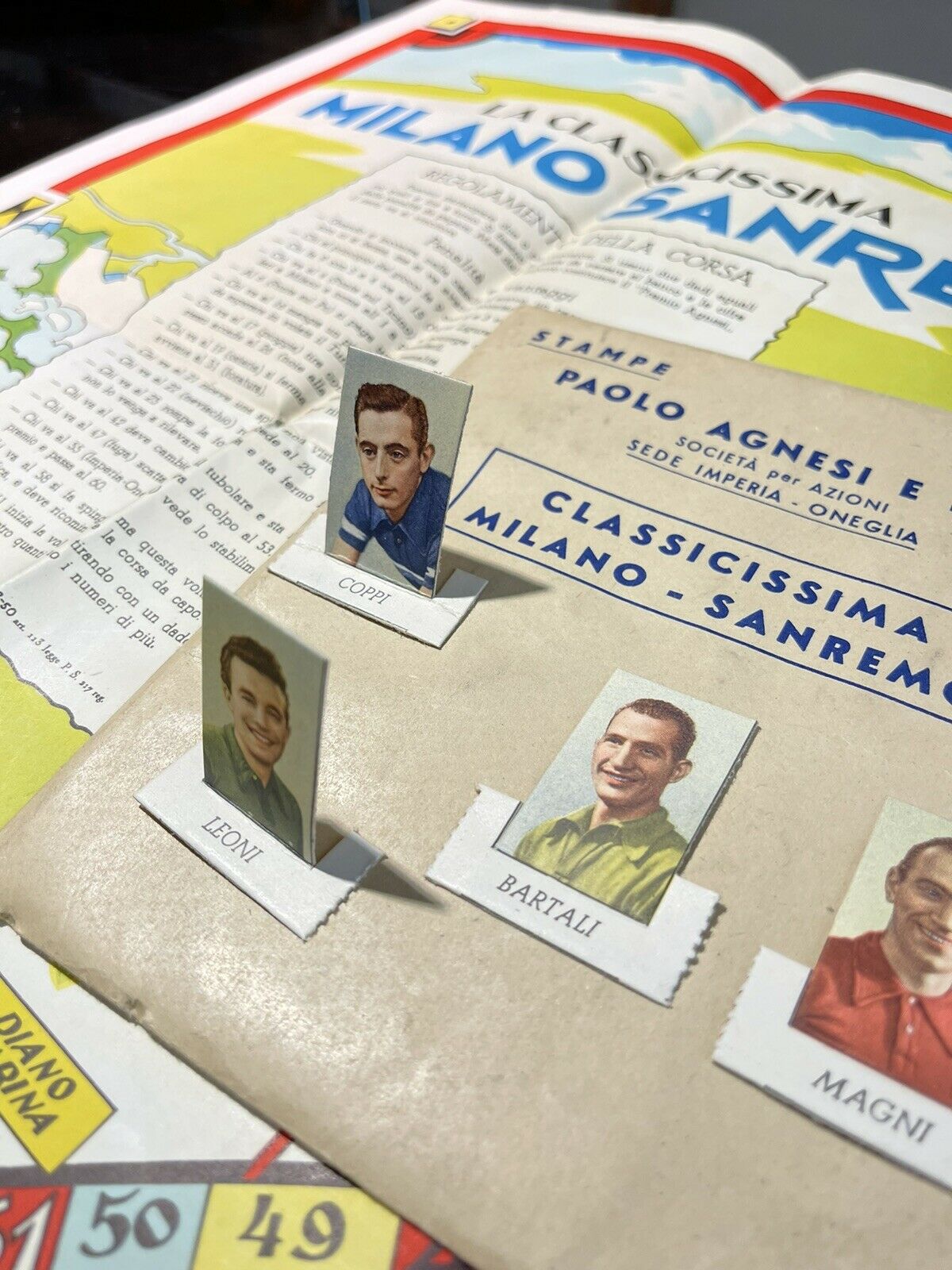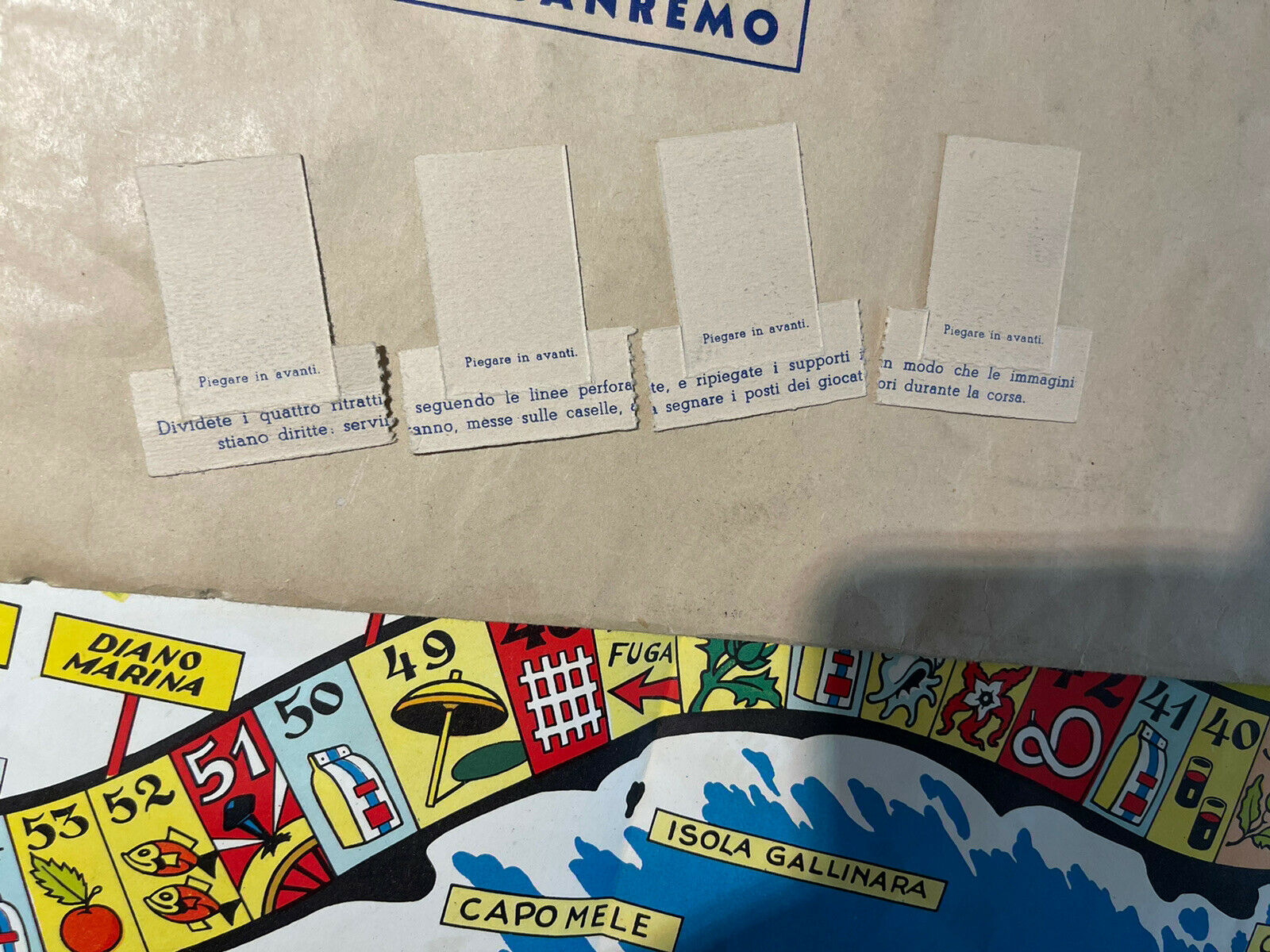Giochi dell'Oca e di percorso
(by Luigi Ciompi & Adrian Seville)
(by Luigi Ciompi & Adrian Seville)

|
Giochi dell'Oca e di percorso
(by Luigi Ciompi & Adrian Seville) |

|
 |

Torna alla ricerca giochi (back to game search) |
 |
| Classicissima (La) Milano-Sanremo | ||
 |
Versione stampabile
 |
Invia una segnalazione

|
    |
primo autore: | Non indicato |
| secondo autore: | Rubino A. | |
| anno: | 1950/60 | |
| luogo: |
Italia-Milano |
|
| periodo: | XX secolo (2°/3°/4) | |
| percorso: | Percorso di 63 caselle numerate | |
| materiale: | carta (paper) (papier) | |
| dimensioni: | 500X700 | |
| stampa: | Cromolitografia | |
| luogo acquisto: | Italia-Lucca | |
| data acquisto: | 12-04-1988 | |
| dimensioni confezione: | ||
| numero caselle: | 63 | |
| categoria: | Ciclismo e gare ciclistiche | |
| tipo di gioco: | Gioco oca variante | |
| editore: | Paolo Agnesi&Figli, Società per Azioni, sede Imperia-Oneglia | |
| stampatore: | Non indicato | |
| proprietario: | Collezione L. Ciompi - A. Seville | |
| autore delle foto: | L. Ciompi - A. Seville | |
| numero di catalogo: | 446 | |
| descrizione: |
Gioco di 63 caselle numerate, pubblicitario della Pasta Agnesi di Paolo Agnesi e Figli, S.p.a., sede Imperia-Oneglia. Il gioco disegnato da Antonio Rubino, è corredato da quattro figurine che rappresentano ciclisti (Leoni, Bartali, Magni e Coppi) da usare come segnaposto. REGOLE: al centro. CASELLE: alcune con didascalia. REFERENZA 1 (...) Our final game also portrays a famous Italian cycle race. "La Classicissima" is an annual event, on the roads between Milan and San Remo, in Northwest Italy. With a distance of almost 300 km, it is the longest professional one-day race in modern cycling. The game, however, celebrates pasta – specifically, that manufactured by the Agnesi company, the most venerable of pasta factories, founded in 1824. Their characteristic packets (spaces 5, 9, 18 etc) when encountered en route act like Goose spaces to double your throw. Additionally, at space 16, having eaten a plate of this admirable pasta, you gain enough energy to conquer Il Turchino [the formidable Turchino mountain pass between the cities of Masone and Mele] and go straight on to Voltri at space 29. Reaching the Agnesi factory at Oneglia, a suburb of Imperia (space 55) also moves you forward. But, corresponding to the Death space in Goose, at the dreaded number 58 you get a push – it is spotted by the stewards, you are disqualified and must start the game again. Contrast this with space 21, where you also receive a favourable push: this one is not spotted, so you move on three spaces. The dubious morality of professional cycling is perhaps accurately implied. Many of the scenes represented in these games are no more. The exotic tricycles have vanished, along with the wayside policeman hoping to catch the dying flicker of an acetylene lamp. Yet the broad changes in our society to which the leisure passion for cycling contributed in the post-Victorian era are still very much with us. The professional sport is not yet a by-word for fair play. And we are daily challenged by those twin persuaders - propaganda and advertising - that opportunistically latch on to all our activities. Just as there is more to cycling than a means of travel, there is more to these board games than merely throwing the dice. (Adrian Seville) |
|
| bibliografia: |
1) SEVILLE, Adrian:"A history of Cycling in six Board Games". In: "The Ephemerist" N°194, autumn 2021. |
|
Vai alla ricerca giochi Vai all'elenco autori